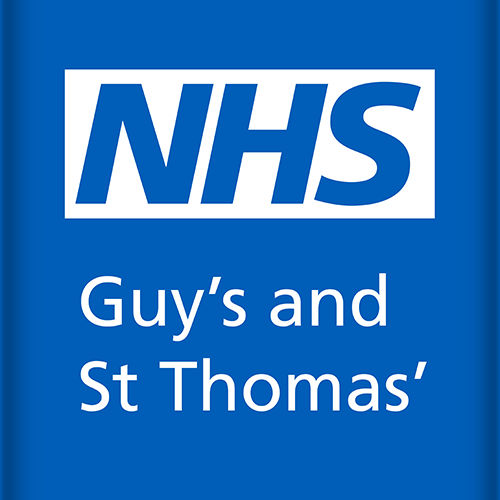预约演示
更新于:2025-05-07
Enterobacter Infection
肠杆菌感染
更新于:2025-05-07
基本信息
别名 Enterobacter infection、Enterobacter infections、Infection caused by Enterobacter + [4] |
简介- |
关联
8
项与 肠杆菌感染 相关的药物靶点- |
作用机制- |
在研适应症 |
非在研适应症- |
最高研发阶段临床前 |
首次获批国家/地区- |
首次获批日期1800-01-20 |
靶点- |
作用机制- |
非在研适应症- |
最高研发阶段临床前 |
首次获批国家/地区- |
首次获批日期1800-01-20 |
靶点 |
作用机制 PBPs抑制剂 |
在研机构 |
原研机构 |
在研适应症 |
非在研适应症- |
最高研发阶段临床前 |
首次获批国家/地区- |
首次获批日期1800-01-20 |
4
项与 肠杆菌感染 相关的临床试验EUCTR2019-001618-41-GB
FERARO: A prospective, randomised placebo controlled feasibility trial of Faecal microbiota Transplant to ERadicate gastrointestinal carriage of Antibiotic Resistant Organisms - FERARO
开始日期2020-04-14 |
NCT04146922
Switch to Oral Antibiotics in Gram-negative Bacteremia (SOAB); a Randomized, Open-label, Clinical Trial.
Eligible subjects will be those age 18 years or more with mono-microbial blood stream infection caused by E. coli, Klebsiella species, Enterobacter species, Serratia species, Citrobacter species, or Proteus species, who have achieved adequate source control, are afebrile and hemodynamically stable for 48 hours or more and have received microbiologically active intravenous therapy for 3-5 days. The bloodstream isolate must be susceptible to amoxicillin, amoxicillin-clavulanate, fluoroquinolones, oral cephalosporins and/or trimethoprim-sulfamethoxazole and the subject must be able to take oral medication directly or through a feeding tube. Exclusions criteria include allergy to all in-vitro active antimicrobials which are available in oral formulations, pregnancy, infective endocarditis, central nervous system infection, terminal illness with expected survival less than 14 days, absolute neutrophil count less than 1,000/ml and hematopoietic or solid organ transplantation within the preceding 90 days. Randomization will be stratified by urinary versus non-urinary source of bacteremia. The primary outcome is treatment failure at 90-days with 10% margin for non-inferiority in the 95% confidence interval around the difference in outcome between the two study groups.
开始日期2019-10-13 |
申办/合作机构 |
EUCTR2013-004838-15-ES
Intestinal colonization by multiresistant enterobacteria in patients with kidney and liver transplantation: multicentre cohort study and randomized, controlled, open clinical trial. - Intestinal colonization by multiresistant enterobacteria in SOT
开始日期2014-08-13 |
申办/合作机构- |
100 项与 肠杆菌感染 相关的临床结果
登录后查看更多信息
100 项与 肠杆菌感染 相关的转化医学
登录后查看更多信息
0 项与 肠杆菌感染 相关的专利(医药)
登录后查看更多信息
261
项与 肠杆菌感染 相关的文献(医药)2025-04-01·Virology
vB_Ent31 bacteriophage may combat Enterobacter cloacae infections with macrophage modulating activity
Article
作者: Li, Hong ; Tang, Yanqiong ; Li, Mengyuan ; Liu, Zhu ; Li, Juanjuan ; Zheng, Naijin ; Chi, Xue ; Ma, Xiang ; Feng, Xiaoshuang ; Ma, Jiayue
2025-02-01·The Lancet Infectious Diseases
REVISITing treatment of metallo-β-lactamases
Article
作者: McCreary, Erin K ; Heil, Emily L
2024-11-01·Microbes and Infection
miR-190 restores the innate immune homeostasis of Drosophila by directly inhibiting Tab2 in Imd pathway
Article
作者: Jin, Ping ; Zhu, Canhe ; Yang, Shangmin ; Wu, Jing ; Ma, Fei ; He, Yuqing ; Yao, Xiaolong
2
项与 肠杆菌感染 相关的新闻(医药)2022-07-04
2022年6月28日,复星发布公告,其控股子公司复宏汉霖与 Palleon签订《合作与许可协议》,根据约定,双方将基于各自专利及专有技术,就Palleon在研产品双功能HER2-唾液酸酶融合蛋白、及待双方合作开发的另一个肿瘤相关靶点唾液酸酶双功能融合蛋白在领域内(即用于人类疾病治疗)的开发、生产及商业化开展合作。
复宏汉霖将就本次合作向Palleon支付合计至多10,052.50万美元首付款、研发及注册里程碑。
公告主要内容
2022年6月28日,本公司控股子公司复宏汉霖与 Palleon签订《合作与许可协议》,根据约定,双方将基于各自专利及专有技术,就(1)Palleon在研产品双功能HER2-唾液酸酶融合蛋白、及(2)待双方合作开发的另一个肿瘤相关靶点唾液酸酶双功能融合蛋白在领域内(即用于人类疾病治疗)的开发、生产及商业化开展合作。
复宏汉霖将就本次合作向Palleon支付合计至多10,052.50万美元首付款、研发及注册里程碑,具体如下:
①应于本协议生效后60日内,支付首付款400万美元。
②关于许可产品的研发及注册里程碑付款至多5,850万美元,该等里程碑包括:
单位:万美元
③关于合作开发产品的研发及注册里程碑付款至多3,802.50万美元。
该等研发及注册里程碑事件与前述许可产品的研发及注册里程碑事件一致,各研发及注册里程碑款项为前述许可产品对应里程碑款项的65%。
合作产品介绍
1、许可产品(即双功能 HER2-唾液酸酶融合蛋白)双功能 HER2-唾液酸酶融合蛋白是Palleon自主研发的靶向HER2的抗体-唾液酸酶融合蛋白。
根据截至目前的研究数据,作为 Palleon最先进的双功能唾液酶之一,双功能 HER2-唾液酸酶融合蛋白已经显示出治疗具有适度至高水平的肿瘤表面唾液聚糖的HER2低表达和HER2高表达肿瘤的潜力;
截至本公告日,其尚处于临床前研发阶段,预计即将进入临床试验支持性研究。
2、合作开发产品(即另一个肿瘤相关靶点-唾液酸酶双功能融合蛋白)另一个肿瘤相关靶点-唾液酸酶双功能融合蛋白是复宏汉霖计划与Palleon 合作开发的创新型免疫治疗产品,拟结合复宏汉霖已拥有的成熟靶点和Palleon专有的 EAGLE技术平台以及唾液酸聚糖在多种肿瘤中高度表达的特性,进一步挖掘肿瘤靶点唾液酸酶双功能融合蛋白的治疗潜力。
截至本公告日,合作开发产品尚处于临床前设计阶段。
截至本公告日,全球范围内尚无已上市的抗体唾液酸酶双功能融合蛋白产品。
往期信息
01
公告主要内容
上海医药集团股份有限公司控股子公司上海上药新亚药业有限公司(以下简称“上药新亚”)分别与轩竹生物科技股份有限公司(以下简称“轩竹生物”)、轩竹(北京) 医药科技有限公司(以下简称“轩竹北京”)签订了《授权许可协议》, 以不超过人民币(币种下同)2.66 亿、1.74 亿(均除销售提成外)的交易对价取得百纳培南项目、Plazomicin项目(均含原料药和制剂,下称“许可产品”)在中国区域(包括香港、澳门及台湾,下称“授权区域”)的独占许可,包括再许可、使用、生产、进口、开发、包装、分销、销售等一切权利。
上药新亚或其指定的机构将成为许可产品在授权区域内独家的上市许可持有人。上药新亚将拥有自行或通过委托研发等形式开发的与许可产品相关的一切新专利的所有权,本次交易未构成重大资产重组。
交易产品介绍
百纳培南项目为国内自主研发的 1.1 类碳青霉烯类抗生素(β-内酰胺类)新药,通过作用于细菌细胞膜上的青霉素结合蛋白(PBPs),抑制细菌细胞壁合成,引起溶菌死亡。目前其复杂尿路感染适应症在国内已完成临床二期试验并达到理想临床终点。
Plazomicin项目为新一代氨基糖苷类衍生物,通过与细菌核糖体30S亚基结合来抑制细菌蛋白质的合成,已于2018年获得FDA(美国食品药品监督管理局) 批准上市,用于针对多重耐药肠杆菌感染的复杂尿路感染的末线治疗。
02
交易概述
中药业务板块是公司除精神神经、心脑血管两大核心领域外的主要子业务,为进一步拓宽业务布局,实现中药业务板块的积极发展,公司拟以自有资金现金支付方式收购元金健康持有的胡庆余堂5.8824%股权。
经北京国融兴华资产评估有限责任公司评估,截至到2021年12月31日,胡庆余堂的股东全部权益价值按市场法评估后的评估值为368,920.00万元,对应5.8824%股权的评估值为21,701.35万元,经协商确定本次交易价格为21,500万元,本次关联交易不构成重大资产重组。
胡庆余堂相关信息
杭州胡庆余堂集团有限公司为该公司主要股东,成立于2003年,经营范围:批发、零售:乙类非处方药、中药材、中药饮片;批发、零售:建筑材料,钢材;批发、零售、网上销售:百货,日用化学品(除化学危险品及易制毒品),化妆品,第一类医疗器械,第二类医疗器械;
元金健康作为产业投资基金,于2016年投资持有广东沙溪制药有限公司99%股权、杭州胡庆余堂医药控股有限公司6%股权。
2021年12月,元金健康和公司签订《股权转让协议》,将其持有的广东沙溪制药有限公司99%股权转让给公司,仍持有杭州胡庆余堂医药控股有限公司5.8824%股权。
交易影响
杭州胡庆余堂医药控股有限公司是杭州胡庆余堂集团有限公司的重要控股子公司,整合了集团医药产业的优质资源,拥有比较完整的中药产业链。
为进一步拓宽公司中药产业资源、深化与胡庆余堂的商业合作、促进公司中药业务更好发展,公司拟购买胡庆余堂5.8824%股权(公司已通过参股元金健康间接持有胡庆余堂2.3436%股权),同时也分享胡庆余堂业绩稳健发展的红利。
本次股权收购事项符合公司已有中药产业发展规划、有利于进一步提升公司总体经营业绩,实现公司的可持续发展。
内容来源于网络,如有侵权,请联系删除。
免疫疗法合作并购
2022-06-21
2022年06月20日上药集团发布公告,公司以不超过人民币2.66 亿、1.74亿(均除销售提成外)的交易对价取得百纳培南项目、Plazomicin项目(均含原料药和制剂,下称“许可产品”)在中国区域(包括香港、澳门及台湾,下称“授权区域”)的独占许可。
公告主要内容
上海医药集团股份有限公司控股子公司上海上药新亚药业有限公司(以下简称“上药新亚”)分别与轩竹生物科技股份有限公司(以下简称“轩竹生物”)、轩竹(北京) 医药科技有限公司(以下简称“轩竹北京”)签订了《授权许可协议》,以不超过人民币(币种下同)2.66 亿、1.74 亿(均除销售提成外)的交易对价取得百纳培南项目、Plazomicin项目(均含原料药和制剂,下称“许可产品”)在中国区域(包括香港、澳门及台湾,下称“授权区域”)的独占许可,包括再许可、使用、生产、进口、开发、包装、分销、销售等一切权利。
上药新亚或其指定的机构将成为许可产品在授权区域内独家的上市许可持有人。上药新亚将拥有自行或通过委托研发等形式开发的与许可产品相关的一切新专利的所有权,本次交易未构成重大资产重组。
交易产品介绍
百纳培南项目为国内自主研发的 1.1 类碳青霉烯类抗生素(β-内酰胺类)新药,通过作用于细菌细胞膜上的青霉素结合蛋白(PBPs),抑制细菌细胞壁合成,引起溶菌死亡。目前其复杂尿路感染适应症在国内已完成临床二期试验并达到理想临床终点。
Plazomicin项目为新一代氨基糖苷类衍生物,通过与细菌核糖体30S亚基结合来抑制细菌蛋白质的合成,已于2018年获得FDA(美国食品药品监督管理局)批准上市,用于针对多重耐药肠杆菌感染的复杂尿路感染的末线治疗。
往期信息
交易概述
中药业务板块是公司除精神神经、心脑血管两大核心领域外的主要子业务,为进一步拓宽业务布局,实现中药业务板块的积极发展,公司拟以自有资金现金支付方式收购元金健康持有的胡庆余堂5.8824%股权。
经北京国融兴华资产评估有限责任公司评估,截至到2021年12月31日,胡庆余堂的股东全部权益价值按市场法评估后的评估值为368,920.00万元,对应5.8824%股权的评估值为21,701.35万元,经协商确定本次交易价格为21,500万元,本次关联交易不构成重大资产重组。
胡庆余堂相关信息
杭州胡庆余堂集团有限公司为该公司主要股东,成立于2003年,经营范围:批发、零售:乙类非处方药、中药材、中药饮片;批发、零售:建筑材料,钢材;批发、零售、网上销售:百货,日用化学品(除化学危险品及易制毒品),化妆品,第一类医疗器械,第二类医疗器械;
元金健康作为产业投资基金,于2016年投资持有广东沙溪制药有限公司99%股权、杭州胡庆余堂医药控股有限公司6%股权。
2021年12月,元金健康和公司签订《股权转让协议》,将其持有的广东沙溪制药有限公司99%股权转让给公司,仍持有杭州胡庆余堂医药控股有限公司5.8824%股权。
交易影响
杭州胡庆余堂医药控股有限公司是杭州胡庆余堂集团有限公司的重要控股子公司,整合了集团医药产业的优质资源,拥有比较完整的中药产业链。
为进一步拓宽公司中药产业资源、深化与胡庆余堂的商业合作、促进公司中药业务更好发展,公司拟购买胡庆余堂5.8824%股权(公司已通过参股元金健康间接持有胡庆余堂2.3436%股权),同时也分享胡庆余堂业绩稳健发展的红利。
本次股权收购事项符合公司已有中药产业发展规划、有利于进一步提升公司总体经营业绩,实现公司的可持续发展。
内容来源于网络,如有侵权,请联系删除。
并购创新药合作抗体
分析
对领域进行一次全面的分析。
登录
或

生物医药百科问答
全新生物医药AI Agent 覆盖科研全链路,让突破性发现快人一步
立即开始免费试用!
智慧芽新药情报库是智慧芽专为生命科学人士构建的基于AI的创新药情报平台,助您全方位提升您的研发与决策效率。
立即开始数据试用!
智慧芽新药库数据也通过智慧芽数据服务平台,以API或者数据包形式对外开放,助您更加充分利用智慧芽新药情报信息。
生物序列数据库
生物药研发创新
免费使用
化学结构数据库
小分子化药研发创新
免费使用




